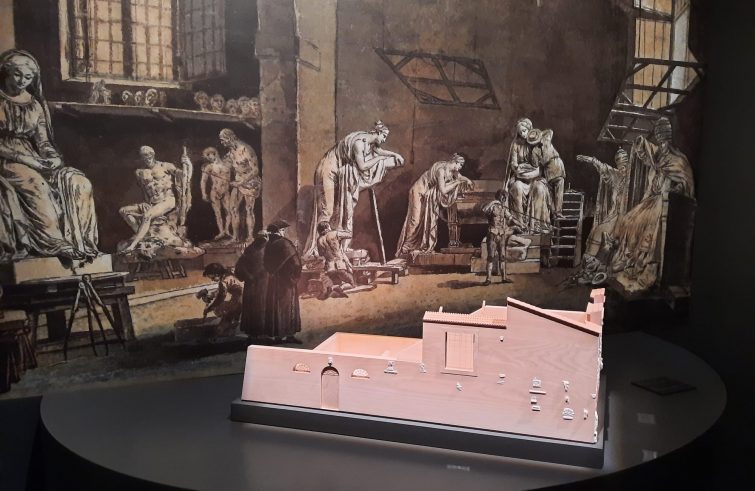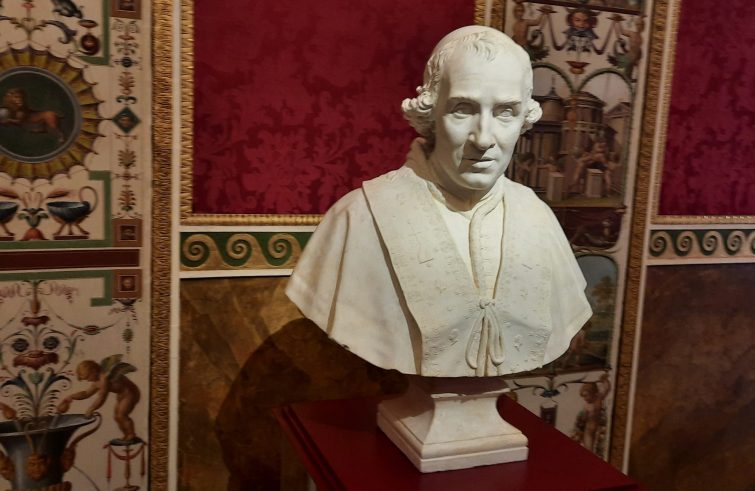
“An important figure in the cultural policies of the papacy, which enhanced his organisational skills, his spirit of service, his commitment for the protection and safeguarding of the artistic heritage entrusted to his watchful care. The Vatican Museums owe a great deal to this extraordinary figure, whom we have decided to honour”, said Barbara Jatta, Director of the Vatican Museums, referring to Antonio Canova, to whom the “Pope’s Museums” are paying homage with the exhibition “Antonio Canova in the Vatican Museums”, open to the public until January 31st 2024. This major exhibition project pays tribute to the figure and artistic masterpieces of the famous Italian sculptor, who played an important institutional role in the papal collections as Superintendent, and as Director. He played a key role in helping to recover artworks seized during the Napoleonic wars. The exhibition, which will close the 2022-2023 Canova Celebrations, has been curated by Alessandra Rodolfo, curator of the 17th and 18th century Art Department, with the direct involvement of the Director. Divided into different sections within the Vatican Museums, the exhibit will offer visitors an exceptional opportunity to admire a wide selection of Canova’s works, highlighting his importance and his influence on the artistic production of his time, as well as his personality and craftsmanship. The initiative offers visitors the opportunity to visit the Sala delle Dame, which showcases a collection of artworks, sketches and plaster casts by Canova, together with other artworks by artists of his time, such as Giuseppe De Fabris and Cincinnato Baruzzi.
The exhibition hall, one of the most magnificent rooms in the Vatican Museums, was hitherto closed to visitors. It will now be open permanently, not only during the exhibition, in a format yet to be defined.

Completed thanks to Pope Paul V Borghese between 1608 and 1609, the same pontiff commissioned Guido Reni to paint the magnificent frescoes on the vault, depicting Pentecost, the Transfiguration and the Ascension. The splendid wall decorations immerse visitors in a 19th century atmosphere, in perfect harmony with Canova’s masterpieces. “The seventeenth-century Sala della Dame, whose vault is decorated with frescoes by Guido Reni, houses a collection of Canova’s works, mostly on religious subjects. The works were donated by Cardinal Placido Zurla. The exhibition is the culmination of a project to restore to public view all the works of the great master of sculpture in the Vatican”, Rodolfo explained.
In Room XVI of the Vatican Art Gallery, normally the venue for the presentation of Museums at Work exhibitions, visitors will have the opportunity to experience the atmosphere of the Sculptor’s workshop in Rome, where he set up his studio in 1783 – a favourite destination of the Grand Tour travellers and diplomats, aristocratic artists and intellectuals of his time – located midway between Via delle Colonnette and Via di San Giacomo, now Via Antonio Canova.
In addition to Canova’s magnificent bust of Pope Pius VII, the exhibition includes a scale model of Canova’s studio, with fragments of ancient Roman sculptures and architectural motifs on the façade and side elevations of the building, testimony to Canova’s love of antiquity and of his steadfast commitment to the protection and preservation of artistic heritage. The bust of Canova by Antonio d’Este is complemented by a ceramic plaque with a portrait of Canova by the Maestro Luigi Ontani. The latter now works in one of the rooms of Canova’s studio.
In the splendid setting of the Octagonal Courtyard we find the Cabinet of Perseus, the hero of Greek mythology – carved on the master’s personal initiative between the end of 1800 and the beginning of the year 1801 – proudly and triumphantly gazing at his monstrous trophy, the head of Medusa, which is why he turned to stone.
Next to him, the two famous statues of the boxers Creugas and Damoxenos, inspired by an encounter described by Pausanias in his work ‘Periegesis of Greece’, are displayed facing each other, just as Canova had conceived them. The tour continues in the Chiaromonti Gallery, opened at the beginning of the 19th century to increase the papal collection of sculptures after the Napoleonic confiscations. This splendid gallery is the best example of Canova’s rigorous supervision, created with the support of his trusted collaborator, the sculptor Antonio D’ Este. In addition to numerous acquisitions, the collection was enriched with sculptures transferred from the Vatican palaces and the gardens of the Quirinale, bringing the total number of artworks to around 1100. The artistic taste of the 18th century was, and still is, fully reflected in the Gallery’s complex layout. It was a real celebration of archaeology as a modern discipline. Even the New Wing (Braccio Nuovo) built by the architect Raffaele Stern to house the ancient sculptures that were part of the papal collections at the time, reflects Canova’s appreciation of the harmony of the whole, where ancient and contemporary art enter into a perfectly harmonious dialogue.











